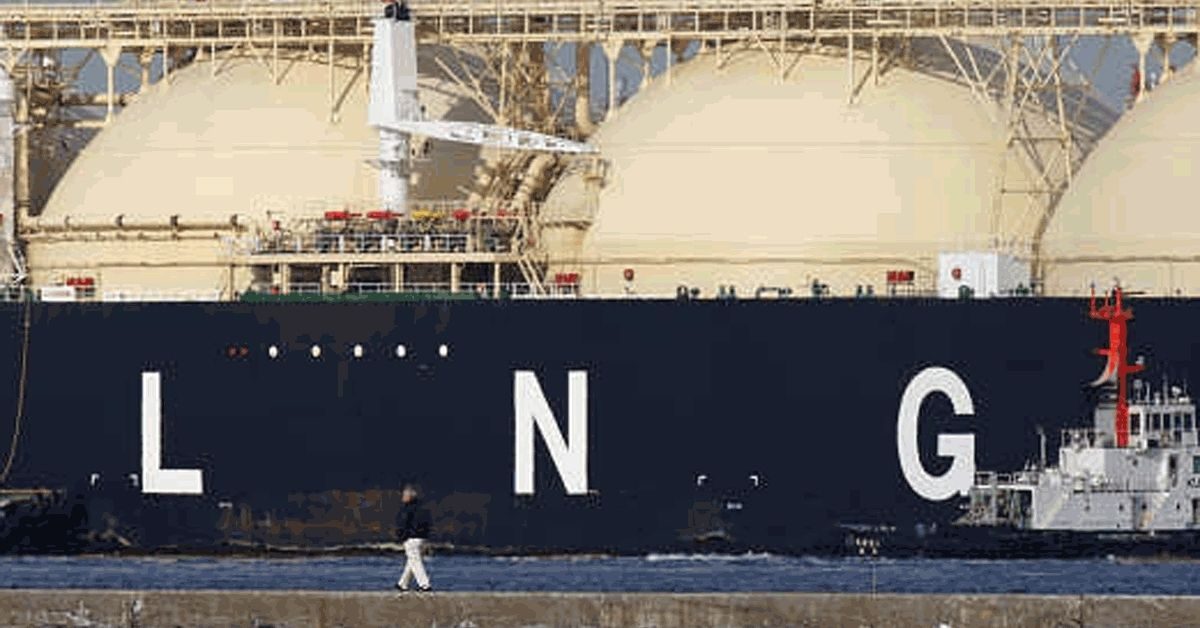Europe has been drastically trying to replenish its stocks in time for winter when demand is set to soar.
Russia cutting pipeline gas shipments from Nord Stream 1, many countries have had to shift reliance to Russian LNG, provided by private firm Novatek
As Europe edges nearer to its 5th December cut-off date for Russian oil imports, it is still finding it hard to wean itself off all Russian energy. Reliance on Russia’s gas is proving more of an issue than initially anticipated, as Europe is reluctant to introduce sanctions on the natural gas product for fear of shortages and rising prices. While European imports of Russian coal and oil have dropped significantly since Russia invaded Ukraine earlier this year, the region continues to rely heavily on Russian LNG. Exports of the liquid gas rose around 20 percent between March and October compared to the same period in 2021, according to Rystad Energy. Shipments of Russian LNG in the year to September totalled 1.2 million tonnes, equating to between $1 billion and $2 billion.
Europe has been drastically trying to replenish its stocks in time for winter when demand is set to soar. In fact, the EU’s storage levels are thought to be at around 95 capacity, with many ships carrying LNG stuck in European ports as they wait to find space to offload LNG cargoes.
But with Russia cutting pipeline gas shipments from Nord Stream 1, many countries have had to shift reliance to Russian LNG, provided by private firm Novatek. This is not surprising considering that Russia is the world’s fourth-largest LNG producer, meaning that many countries worldwide have come to rely on it for their energy supplies in recent years. It provides around 15 percent of Europe’s LNG, a quantity that’s not easily replaced by other supplies in a short time frame. Analysts at Rystad Energy think this figure is unlikely to decrease in the next year.
Anne-Sophie Corbeau, a global research scholar at the Center on Global Energy Policy (CGEP) explained, “The EU needs LNG,” adding, “So it is convenient for them to turn a blind eye on [Russian] LNG, while Russia continues to enjoy [the] revenues… so far, this LNG has been going mostly under the radar.”
But as the U.S. introduces sanctions on Russian Energy and the EU follows suit, continuing its reliance on Russian gas could prove troublesome as it is vulnerable to any cuts from Russia. It also undermines the region’s efforts to condemn Russia’s ongoing conflict with Ukraine. Europe’s pipeline oil from Russia is around 20 percent of what it was before the invasion, meaning that when the region needs to replenish its stocks in 2023 it will be harder to do so. Therefore, several European powers are looking to other gas-rich countries to fill the gap.
The EU’s ‘REPowerEU’ plan, announced in March, seeks to diversify the region’s gas suppliers and scale up the renewable energy transition. The EU has identified Norway, the second biggest regional gas producer after Russia, as a potential supplier for Europe. Norway has been steadily raising production to support the EU’s shift away from Russian fossil fuels by 2027.
Some countries already use other gas sources, with little reliance on Russia. The U.K., for example, does not rely on Russian gas, with energy firm Centrica having signed an agreement with Norway’s Equinor for additional gas supplies over the next three winters. Cyprus also has other gas suppliers, with no dependence on Russia. However, France relies on Russia for 24 percent of its imported gas, Germany for 46 percent, and Hungary for more gas than it consumed in the whole year. So, while some countries are finding the shift away from Russia relatively easy, others are worried about their energy security should they cut all energy ties with Russia.
The U.S. and the Middle East have played a vital role in filling the gap, delivering larger amounts of LNG to Europe. But there are still fears of shortages, which have sent gas prices sky-high throughout 2022. Germany is now exploring the potential for constructing five new LNG terminals to ensure that cargo ships arriving aren’t turned away due to a lack of slots to offload their cargo.
As several European countries race to solidify their energy security by securing new gas suppliers and investing in infrastructure, not everyone is in agreement. For example, Spain and Germany want to establish a new gas connection through the Pyrenees mountains, but France opposes the initiative. Instead, France favours new LNG terminals, which can be made to float, that it believes would be quicker and cheaper to construct than a new pipeline.
No matter how hard it tries, Europe appears to be unable to reduce its reliance on Russian LNG. Its move away from Russian crude means little if the region is still pumping funds into Russia via LNG imports. And despite efforts from Norway, the U.S., and other countries around the world to supply Europe with much-needed gas, this is only a short-term solution. Greater investment in Europe’s natural gas infrastructure and renewable energy sector could support its long-term movement away from Russian energy, but it is likely to remain heavily reliant on Russia for energy in the short term.







